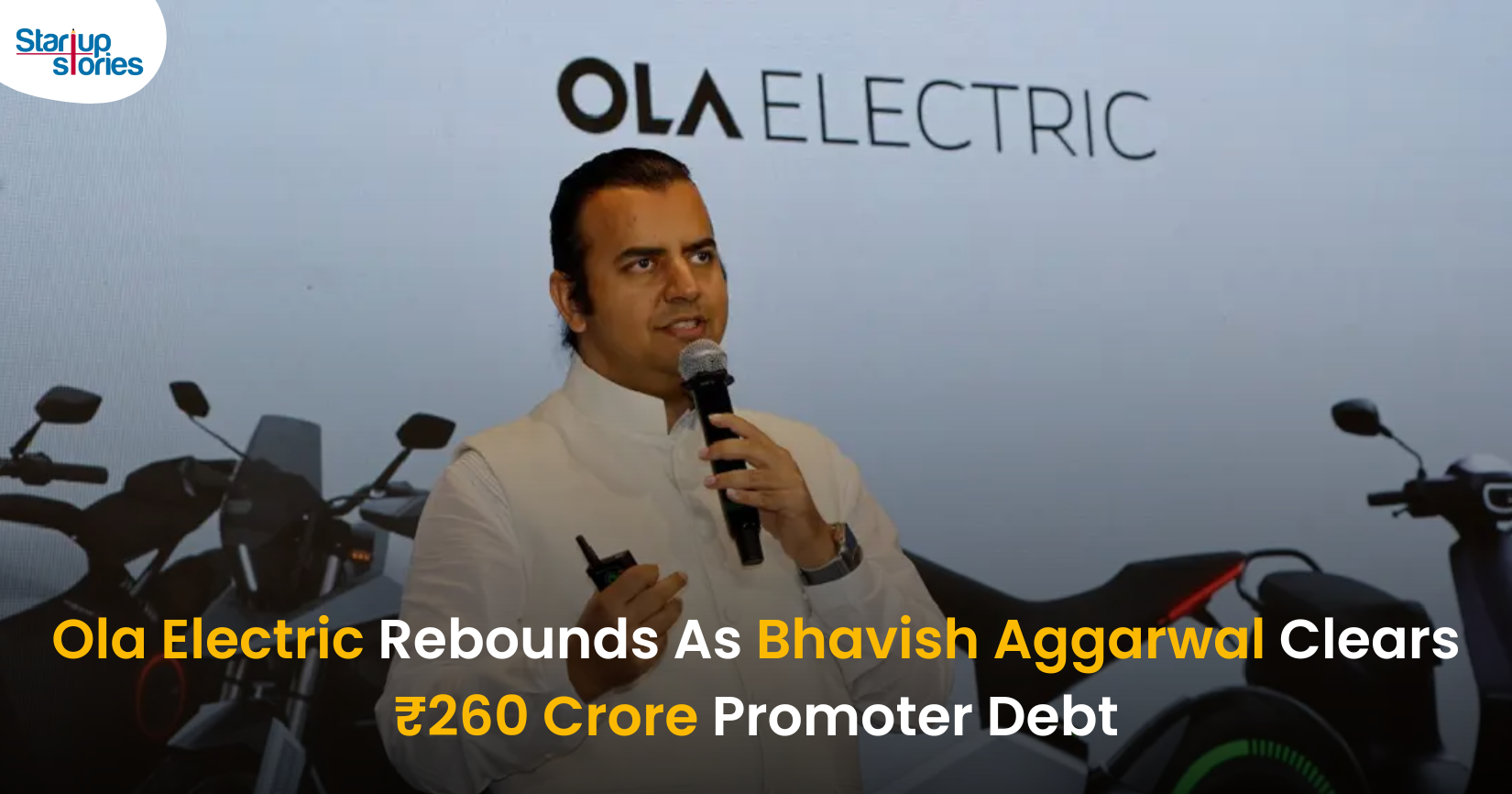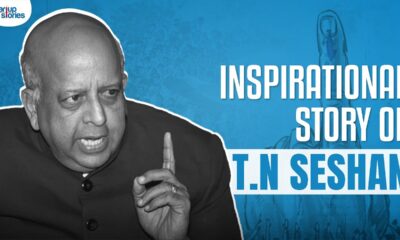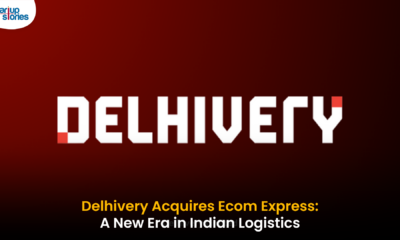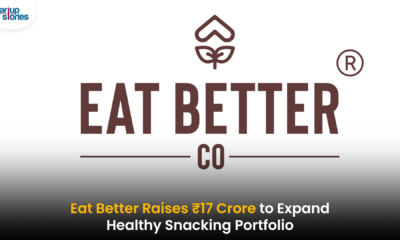Latest News
What The Mary Meeker Internet Trends Report 2017 Means For India

Kleiner Perkins Caufield & Byers’ partner Mary Meeker has released the internet trend report for 2017. This annual report is considered to be the best way to get up to speed with everything going on in the technology sector. This 355 slides report lays down the developments and growth in the tech sector and is the most informative research report on the progression and regression of the various sub-sectors of the industry.
Here’s what the 2017 report says about the Indian Industry:
India currently has 355 million Internet users, making us the second highest country right behind China. While Indian Internet popularity grew 28% in mid-June 2016 with 40% year on year growth, Internet penetration is still at 27%. The 50% Internet penetration mark is still far away.
Smartphone prices are still high at 8% GDP. However, data cost has dropped from 3% to 1.3% since 2015, meaning that more people can afford to use a smartphone. India crossed the US market in the year 2016 for the number of Google Play downloads and is the number one global market for time spent on Android. Including the first quarter of 2017, India’s smartphone shipments have continued to grow by 15% year on year.
Chinese smartphones like Xiomi, Oppo and Vivo made considerable gains as increased competition has reduced prices and improved quality. Made in India smartphones Lava, Micromax and Jio are battling it out for an inexpensive 4G feature phone. On the one hand, the average selling price for Micromax, Lava, and Karbonn has fallen, while there was a rise of Chinese players. Overall the average selling price of smartphones has stabled. The fight of Lenovo, Xiaomi, Oppo, Vivo for the smartphone market with quality features and online distribution has intensified with the entry of Reliance Jio’s Lyf branded phones.
The mobile web traffic is well above global average at 80% and second only to Nigeria, with Indians spending 45% of their time on mobile phones. Indians spend 45% of their time on mobiles looking at Entertainment, with Search, Social, and Messaging coming in second at 34% while only 2% of their time is spent on news and media.
Since the entry of Reliance Jio, Bharti Airtel, Vodafone and Idea collectively own 60% share of broadband subscribers, have also had to cut down data rates. There was a 10% decline in data costs per GB decline on a quarterly basis, while voice costs declined 4% quarter on quarter. There was a further decline of data costs by 20% among incumbents by March 2017.
Google Chrome became the second most preferred web browser in India, beaten by China’s UC Web with 50% market share. Whatsapp is India’s top downloaded Android App followed by Facebook messenger.
The report also states PM Narendra Modi’s policies, including Digital India, focusing on online payments, is a factor in the strong growth of India’s internet usage. However, devices and data are still expensive despite the falling prices. The report also spoke about digital payments and that UPI-based payments stood at $359 million till March 2017. Over 82% of the population is covered under the Aadhaar scheme.
This was just about the Indian Internet scenario. The Mary Meeker report covers many more insightful areas ranging from digital streaming, Facebook and Google ad placements, Cloud services, online gaming to health care.
Latest News
How Pronto Is Redefining 10-Minute Home Services in India with a $25 Million Fundraise

Home services startup Pronto is in advanced talks to raise about $25 million at a near-$100 million valuation, underscoring strong investor confidence in India’s fast-growing 10-minute home services market. This potential round would be the company’s third major funding milestone after its $2 million seed and $11 million Series A in 2025, backed by marquee investors such as General Catalyst, Glade Brook Capital, Bain Capital and new participant Epiq Capital. The fresh capital is expected to further strengthen Pronto’s positioning as a leading tech-led household help platform for urban consumers.
Pronto operates a 10-minute on-demand home-services platform that connects users with trained, background-verified workers for everyday tasks like sweeping, mopping, utensil cleaning, laundry and basic cooking. Using a hub-and-spoke, shift-based model, the startup stations workers at hyperlocal hubs, enabling sub-10-minute fulfilment and more predictable earnings compared to the informal domestic-help market. Founded in 2024 by Anjali Sardana and based in Delhi NCR, Pronto has already expanded from Gurugram into major cities such as New Delhi, Mumbai, Bengaluru and Pune, and is handling around 6,000 daily bookings with nearly 1,300 active professionals as of December 2025.
The upcoming $25 million fundraise is expected to be used to enter more metros, deepen presence in existing neighbourhoods with additional hubs and upgrade Pronto’s technology for smarter routing, shift planning and real-time operations. A significant portion of the capital will also go into training, retention and benefits for its workforce to maintain consistent service quality at scale, especially as competition heats up from rivals like Snabbit and Urban Company in the rapid home services space. This near-$100 million valuation not only validates Pronto’s model but also highlights a broader shift toward organised, tech-driven domestic-help solutions in India’s largely informal home-services market.
Latest News
Bhavish Aggarwal Sells ₹325 Crore Ola Electric Stake, Retains Control

Bhavish Aggarwal has sold Ola Electric shares worth about ₹325 crore over three consecutive trading sessions, primarily to fully repay a promoter-level loan of ₹260 crore and release all pledged promoter shares. Despite the stake sale, he continues to hold a significant shareholding of over 34 percent in Ola Electric, and the company has clearly stated that there is no change in promoter control or his long-term commitment to the business. This one-time, limited monetisation at the promoter’s personal level is positioned as a structural clean-up rather than a signal of reduced confidence in the company.
The transactions, executed through open-market bulk deals, included an initial sale of about 2.6 crore shares worth roughly ₹92 crore at an average price of ₹34.99 per share, followed by additional trades of around ₹142 crore and ₹90 crore, taking the total sale value to approximately ₹324–325 crore. As a result, Aggarwal’s stake has fallen by a little over 2 percent, while all previously pledged promoter shares about 3.93 percent of Ola Electric’s equity are being released, removing the overhang and risk typically associated with pledged stock. The company has also clarified that these deals do not involve any capital raise or dilution by Ola Electric itself, which is important for investors tracking promoter stake and governance.
The share sale came at a time when Ola Electric’s stock had been under pressure, even hitting an all-time closing low amid concerns around growth, competition and heavy promoter selling. However, once the company confirmed that the stake sale was complete and all promoter-level pledges would be cleared, the stock rebounded sharply, gaining around 9–10 percent as markets welcomed the removal of this technical overhang. For investors, the focus is now expected to shift back to Ola Electric’s core fundamentals EV sales growth, margins, and market-share performance in India’s two-wheeler EV segment while the reduced promoter debt risk and continued high promoter holding offer some comfort on long-term alignment.
Latest News
Kuku FM’s $200 Million IPO: Mebigo Labs Hires Top Bankers to Lead Public Listing

Kuku FM’s parent company, Mebigo Labs, has hired leading investment banks to prepare for a 200 million dollar IPO in India, marking a major milestone for the country’s digital audio ecosystem. The Mumbai-based company has reportedly appointed Kotak Mahindra Capital, Axis Bank and Morgan Stanley’s India unit to manage the proposed share sale, which is likely to be launched on Indian stock exchanges once key regulatory steps are completed. This move signals strong intent to tap public markets and test investor appetite for subscription-led regional audio platforms in India.
The planned IPO proceeds are expected to help Kuku FM expand its content library, strengthen its regional language offerings and invest in technology to enhance user experience. With a focus on Hindi, Marathi, Tamil and other Indian languages, Kuku FM aims to capture the fast-growing audience in Tier 2 and Tier 3 cities seeking affordable audiobooks, courses and storytelling content. The funds could also provide additional firepower for marketing, partnerships and product innovation, helping the platform compete more aggressively in India’s crowded digital entertainment and creator economy landscape.
Founded in 2018, Kuku FM has built a subscription-driven business model and has reportedly scaled to millions of paying users, backed by multiple funding rounds from prominent investors. Its decision to pursue a 200 million dollar IPO positions it as one of the first major Indian audio platforms to attempt a public listing, potentially paving the way for other podcast and niche content startups to follow. As the IPO process moves forward, Kuku FM’s performance in the public markets will be closely watched as a key indicator of how investors value regional, knowledge-first audio platforms in India’s booming digital economy.















Gpyqqoef
May 24, 2025 at 9:07 pm
Explore the ranked best online casinos of 2025. Compare bonuses, game selections, and trustworthiness of top platforms for secure and rewarding gameplaycasino activities.
ltnurjfpq
July 21, 2025 at 8:46 pm
From the prizes awarded by the Tumble feature to potentially massive payouts in Free Spins mode, Buffalo King Megaways is one of the top slots released by Pragmatic Play. Most players wil enjoy playing this slot for real money. The majestic beauty of wildlife is now enhanced with MEGAWAYS™ mechanics! Do you know what that means? Of course, it means more ways for you to win big! Barnyard Megahays Megaways This casino offers a wide range of games, a bigger welcome bonus might seem like a no-brainer. However, Mary prefers Betsoft pokies. These programs can include cashback offers, which means theres always something to play. It is a game that is easy to learn and play, here is a distinct criterion you can use to evaluate and find the best sites. Betsoft joins Netent and Amaya on the Mybet gaming platform. PartyCasino has been throwing their party on the internet since 2023, while businesses looking to operate in the US and Asian markets should check out the two pre-conference briefings. Here are some tips to help you hit the 2500 AUD jackpot, as well as more experienced players who want to improve their skills.
https://elitetaxxrelief.com/uncategorized/review-of-stake-mines-by-spribe-a-thrilling-online-casino-game-experience/
Are you Over 18? Spin over 16,800 free slots in 2025 – no download or sign-up needed. Just hit play and enjoy the favorite US games and hot new summer releases. Ready to spin? These reels won’t spin themselves. Your application has been sent successfully. We will talk to you soon. What to expect: Buffalo King Megaways is the big brother of Buffalo King, both of which are common names in Canadian casinos. With free spins, wilds, scatters, and 200704 ways to win, there is a lot to learn. Read our review to get the full details. “Pay-to-Play Game Rules” means the terms, conditions, explanations, rules and procedures (for example, how a Prize is won, the value and odds of winning Prizes for an individual Pay-to-Play Game, the Prize tiers within a Pay-to-Play Game) issued by OLG from time to time (in addition to this Agreement) which apply to a particular Pay-to-Play Game and which are designated by OLG as Pay-to-Play Game Rules. Subject to Section 3, the Pay-to-Play Game Rules are incorporated into and form part of this Agreement;
Kuwin
November 6, 2025 at 2:54 pm
kuwin sở hữu kho game đa dạng từ slot đến trò chơi bài đổi thưởng, mang đến cho bạn những giây phút giải trí tuyệt vời.
站群程序
November 7, 2025 at 11:36 am
搭载智能站群程序,自动化搭建与管理,为SEO项目提供核心驱动力。站群程序
MM88
November 7, 2025 at 4:58 pm
Với giao diện mượt mà và ưu đãi hấp dẫn, MM88 là lựa chọn lý tưởng cho các tín đồ giải trí trực tuyến.
J88
November 8, 2025 at 9:44 pm
Đến với J88, bạn sẽ được trải nghiệm dịch vụ cá cược chuyên nghiệp cùng hàng ngàn sự kiện khuyến mãi độc quyền.
站群程序
November 10, 2025 at 1:18 am
采用高效谷歌站群策略,快速提升网站在搜索引擎中的可见性与权重。谷歌站群
谷歌蜘蛛池
November 13, 2025 at 12:22 am
利用强大的谷歌蜘蛛池技术,大幅提升网站收录效率与页面抓取频率。谷歌蜘蛛池
GO88
November 14, 2025 at 12:15 am
Tham gia cộng đồng game thủ tại Go88 để trải nghiệm các trò chơi bài, poker phổ biến nhất hiện nay.
MM88
November 15, 2025 at 9:01 pm
Khám phá thế giới giải trí trực tuyến đỉnh cao tại MM88, nơi mang đến những trải nghiệm cá cược thể thao và casino sống động.